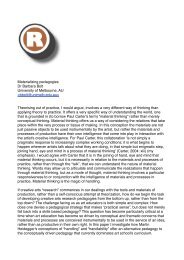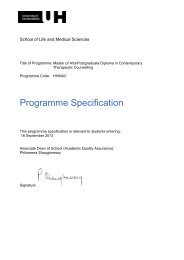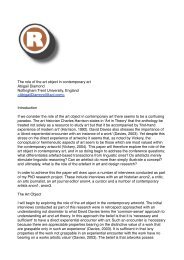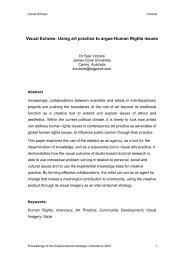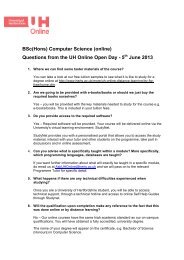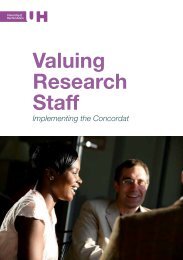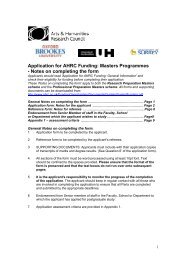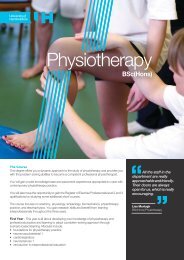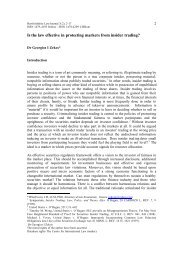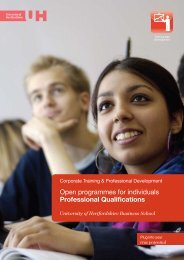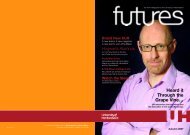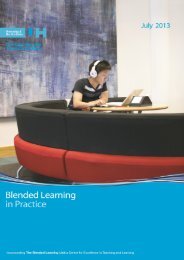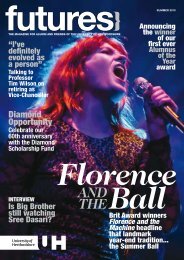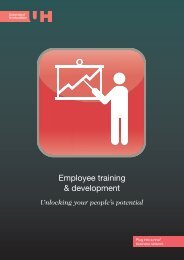June 2009 - University of Hertfordshire
June 2009 - University of Hertfordshire
June 2009 - University of Hertfordshire
Create successful ePaper yourself
Turn your PDF publications into a flip-book with our unique Google optimized e-Paper software.
Introduction <strong>of</strong> a new reflective framework...<br />
17<br />
Two other Higher Education institutions nationally and internationally have expressed<br />
interest in this work following our earlier dissemination <strong>of</strong> the RSF (Jones & Alinier, 2006)<br />
suggesting that there is a potential for wider implementation <strong>of</strong> the RSF beyond the<br />
disciplines studied.<br />
Although the RSF has been designed and evaluated within a healthcare simulation<br />
context involving a preliminary study, we suggest that the framework has the potential to<br />
be applied to other groups <strong>of</strong> learners in a variety <strong>of</strong> disciplines where reflective practice<br />
might not currently be a feature <strong>of</strong> their curriculum as well as where it may already be<br />
established and/or being further developed. For example, work on formative assessment<br />
such as the use <strong>of</strong> Objective Structured Clinical Examinations with nursing students<br />
(Alinier, 2003) has been adapted with support from a grant from the Higher Education<br />
Academy Engineering Subject Centre to be implemented in electronic engineering (Alinier<br />
& Alinier 2006a; Alinier & Alinier 2006b). This year (<strong>2009</strong>), marked the fifth anniversary <strong>of</strong><br />
the successful use <strong>of</strong> OSTE (Objective Structured Technical Examination) at UH which<br />
incorporates reflection as a formative assessment tool within a first year module. The next<br />
stage, including a whole curriculum approach to simulation learning is planned for further<br />
research development <strong>of</strong> the RSF and will be reported elsewhere.<br />
References<br />
Abrahamson, S., Denson, J. S., & Wolf, R. M. (2004). Effectiveness <strong>of</strong> a simulator in<br />
training anaesthesiology residents. Quality & Safety in Health Care, 13, 395-399.<br />
Alinier, G. (2003). Nursing students' and lecturers' perspectives <strong>of</strong> objective structured<br />
clinical examination incorporating simulation. Nurse Education Today, 23(6), 419-426.<br />
Alinier, G. (2007a). Enhancing trainees‟ learning experience through the opening <strong>of</strong> an<br />
advanced multipr<strong>of</strong>essional simulation training facility at the <strong>University</strong> <strong>of</strong> <strong>Hertfordshire</strong>.<br />
British Journal <strong>of</strong> Anaesthetic and Recovery Nursing, 8(2), 22-27.<br />
Alinier, G. (2007b). A typology <strong>of</strong> educationally focused medical simulation tools. Medical<br />
Teacher, 29(8), e243-250.<br />
Alinier, G., & Alinier, N. (2006a). Design <strong>of</strong> an objective assessment tool to evaluate<br />
students‟ basic electrical engineering skills: The oste. Journal for the Enhancement <strong>of</strong><br />
Learning and Teaching, 3(1), 57-63.<br />
Alinier, N., & Alinier, G. (2006b). The oste: Objective structured technical examination for<br />
engineering students. In W. Aung, Crosthwaite, C., Espinosa, R. V., Moscinski, J., Ou, S.,<br />
Ruiz, L. M. S. (Ed.), Innovations 2006 - world innovations in engineering education and<br />
research (pp. 535-544). Arlington: Begell House Publishing.<br />
Benner, P. (1984). From Novice to Expert: Excellence and Power in Clinical Nursing<br />
Practice. Menlo Park, CA: Addison Wesley.<br />
Boud, D., Cressey, P., & Docherty, P. (2006). Productive Reflection at Work. London:<br />
Routledge.<br />
Blended Learning In Practice <strong>June</strong> <strong>2009</strong>



